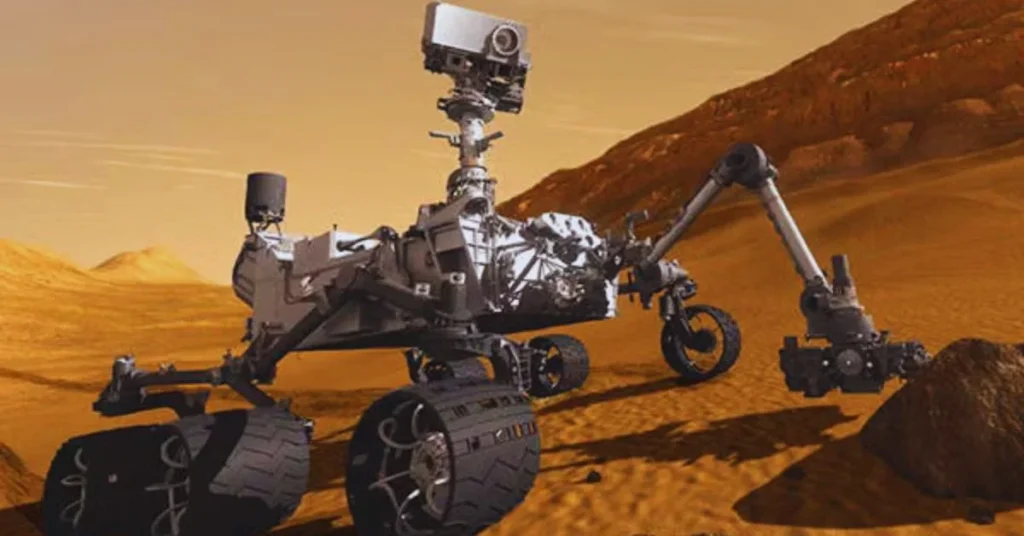Mars Exploration Technology: The Future of Space Discovery
1. Introduction to Mars Exploration
Mars has fascinated humanity for centuries. Early astronomers imagined canals and civilizations on the red planet, but with the dawn of the space age, exploration became a scientific pursuit. Starting with Mariner 4 in 1965 and leading up to modern rovers like Perseverance, Mars Exploration Technology has evolved from simple flybys to complex robotic research expeditions. These technological advancements have given us a deeper understanding of Mars’ surface, atmosphere, and potential to host life.
2. Goals of Mars Exploration
The core objectives of Mars exploration are to study the planet’s formation, climate, and geological history, and to search for signs of life—past or present. Scientists are also preparing for future human missions by testing new technologies on robotic missions. Each rover and orbiter sent to Mars serves as a stepping stone toward the long-term goal of establishing a human presence on another world.
3. Major Space Agencies and Missions
Multiple space agencies have contributed to the success of Mars exploration:
- NASA has led landmark missions like Viking, Curiosity, and Perseverance.
- ESA partnered with Russia on ExoMars and other missions.
- CNSA (China) launched the Tianwen-1 mission with its own rover, Zhurong.
- ISRO (India) achieved success with its budget-friendly Mars Orbiter Mission.
Together, these missions have transformed our understanding of Mars and fostered international cooperation in space science.
4. Mars Rovers and Robotics Technology
Rovers are central to Mars exploration. NASA’s Curiosity and Perseverance are equipped with cameras, sensors, and robotic arms that analyze rocks and soil. Their wheels are built for rugged terrain, while advanced autonomous navigation systems allow them to make decisions without constant human input.
Power comes from either solar panels or radioisotope thermoelectric generators (RTGs), enabling long-term operations. These innovations allow rovers to function as mobile laboratories, sending valuable data back to Earth.
5. Orbiters and Communication Systems
Orbiters like NASA’s MAVEN, ESA’s Mars Express, and India’s Mangalyaan map the Martian surface and atmosphere in great detail. They also serve as communication relays for rovers, transmitting data back to Earth via NASA’s Deep Space Network (DSN). Despite a signal delay of up to 20 minutes, these systems ensure reliable communication across millions of kilometers. Orbiters have revealed key insights, including evidence of water-ice and seasonal methane emissions.
6. Landing and Entry Technologies
Landing on Mars is one of space exploration’s greatest challenges. Its thin atmosphere makes deceleration difficult. Engineers developed supersonic parachutes, heat shields, and sky cranes—the last used in Perseverance’s landing. These technologies ensure a safe and precise descent, overcoming the harsh entry conditions of Mars’ environment.
Also Read: GoMyFinance.com Bills: Simplifying the Way You Manage and Pay Bills
7. Artificial Intelligence and Autonomy
Due to long communication delays, Mars rovers rely heavily on artificial intelligence (AI). They can navigate rocky terrain, detect obstacles, and prioritize research targets autonomously. AI also assists scientists on Earth by analyzing vast amounts of data. In future missions, AI will support robotic teams, aerial drones, and even human crews, increasing mission efficiency and safety.
8. In-Situ Resource Utilization (ISRU) and 3D Printing
Transporting materials from Earth to Mars is costly, so researchers are developing In-Situ Resource Utilization (ISRU) methods to use local resources. NASA’s MOXIE experiment on the Perseverance rover successfully produced oxygen from the Martian atmosphere—an important step toward sustainability.
Combined with 3D printing, ISRU could enable astronauts to build habitats and tools from Martian soil, drastically reducing mission costs and reliance on Earth supplies.
9. Mars Sample Return Mission
The Mars Sample Return (MSR) project, led by NASA and ESA, is one of the most ambitious space efforts ever planned. It aims to bring Martian rock and soil samples back to Earth for detailed study. The Perseverance rover is already collecting samples, which will later be retrieved by a Fetch Rover, launched by a Mars Ascent Vehicle, and returned via an orbiter. This mission could finally answer the question of whether life ever existed on Mars.
10. Human Missions and Future Plans
NASA, SpaceX, and other organizations are preparing for crewed missions to Mars within the next few decades. SpaceX’s Starship aims to transport humans and cargo, while NASA’s Artemis program is laying the groundwork through Moon missions. Future astronauts will rely on advanced life-support systems, radiation protection, and ISRU to survive. Establishing a sustainable human presence on Mars will mark one of humanity’s greatest achievements.
11. Challenges and Risks
Mars exploration faces numerous obstacles:
- Extreme Environment: Temperatures drop below -100°C, and dust storms can last for weeks.
- Radiation: Without a magnetic field, Mars exposes astronauts to harmful cosmic rays.
- Communication Delay: Real-time control is impossible, requiring autonomy.
- Psychological Impact: Long isolation and confinement can affect mental health.
Overcoming these challenges is vital before humans can safely live and work on Mars.
12. Discoveries from Mars Missions
Mars missions have uncovered strong evidence of water and organic molecules. Dry riverbeds, ice caps, and sediment layers suggest that Mars once had a wetter climate. Curiosity and Perseverance have found carbon-based compounds, supporting the theory that life might once have existed there. Each discovery brings us closer to understanding Mars’ potential habitability and its similarities to early Earth.
13. The Future of Mars Exploration Technology
The next generation of Mars exploration will use nuclear propulsion, AI-driven drones, and autonomous construction robots. Scientists are designing bio-regenerative life-support systems that recycle water and air for future habitats. These technologies will make long-term colonization possible and set the stage for Mars to become humanity’s first off-world settlement.
14. Conclusion
Mars exploration technology reflects humanity’s relentless spirit of discovery. Through advanced robotics, AI, and global collaboration, we have transformed distant dreams into tangible progress. Each mission expands our understanding of Mars and paves the way for human exploration. As we prepare to set foot on the Red Planet, Mars represents not just a scientific frontier but the next chapter in humanity’s cosmic journey.



